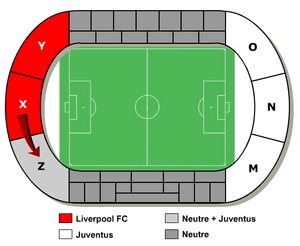 As we go about our business of heading to football games in generally quite safe and sterile environments, it’s easy to forget how much the match-going experience has changed over the years.
As we go about our business of heading to football games in generally quite safe and sterile environments, it’s easy to forget how much the match-going experience has changed over the years.
Sadly not everything has always been as safe and secure as it is in the modern era, with numerous disasters having occurred over the years for reasons beyond the control of the supporters and, in some instances, the authorities.
In this section of the site we’ll tell you about how disasters have occurred in football stadiums over the years, including the major causes. We’ll also have a look at how football as an organised sport learned from history and adapted to make things safer for fans.
Finally we’ll explore what future developments are in the pipeline, if any, including how the UK could learn from methods used abroad.
World’s Biggest Football Stadium Disasters
| Location | Stadium Disaster | Year | Cause | Death Toll |
|---|---|---|---|---|
| Estadio Nacional | 1964 | Riot | 328 | |
| Accra Sports’ Stadium | 2001 | Riot / Police | 126 | |
| Hillsborough | 1989 | Overcrowding / Crush | 96 | |
| National Stadium | 1988 | Crush | 93 | |
| Mateo Flores National Stadium | 1996 | Crush | 80 | |
| Port Said | 2012 | Riot | 79 | |
| Estadio Monumental | 1968 | Crush | 71 | |
| Lenin (Luzhniki) Stadium | 1982 | Stampede | 66 | |
| Ibrox | 1971 | Crush | 66 | |
| Valley Parade | 1985 | Fire | 56 | |
| Ataturk Stadium | 1968 | Riot | 44 | |
| Ellis Park | 2001 | Stampede | 43 | |
| Oppenheimer | 1991 | Stampede | 42 | |
| Heysel | 1985 | Riot | 39 | |
| Burnden Park | 1946 | Crush | 33 | |
| Ibrox | 1902 | Stand Collapse | 25 | |
| Karaiskakis | 1981 | Stampede | 24 | |
| Estadio Olímpico | 1982 | Stampede | 21 | |
| Armand Cesari | 1992 | Stand Collapse | 18 | |
| National Stadium | 2000 | Stampede / Police | 13 |
Causes Of Stadium Disasters
If there were only one or two causes of stadium disaster then they would be relatively easy to watch out for and mitigate.
Sadly that is not the case, with most of the worst disasters in the history of the game having different causes.
Here are some of the major causes and examples of disasters that came about because of them.
Fire
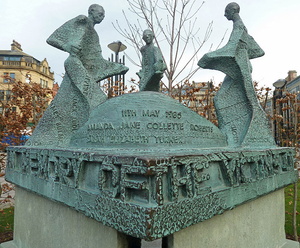
The nature of football over the years has meant that sometimes clubs have made financial decisions regarding the materials that their stadiums are made from. It is not cheap to completely rebuild and overhaul a football ground, so materials such as wood have been favoured over more expensive but safer choices.
Inevitably with a material that is decidedly flammable, things can go wrong.
The worst example of this occurred in 1985 when a cigarette fell between the cracks of the wooden slats used for the stand at Bradford’s Valley Parade Stadium.
Rubbish, waste and discarded newspaper had collected under the bleachers over the years and the cigarette started a fire that engulfed the stand in minutes. over 250 people were injured and 56 supporters sadly lost their lives that day.
Poor Stadium Facilities
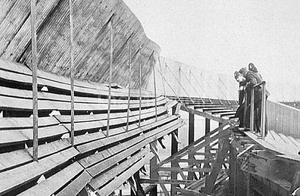
It’s not just wooden stands that have caused problems at stadiums over the years. Nowadays clubs have strict protocols in place to ensure that their grounds meet safety criteria, yet that hasn’t always been the case.
Sometimes clubs have chosen to build their stands from the cheapest material available and they have been unable to cope with the pressure they were put under.
One example of this would be the 1902 Ibrox Stadium Disaster when too many people stood on a wooden terrace that wasn’t designed to take the weight. Part of the stand collapsed and 26 people died as a result.
Another incident that would have been avoided with better facilities was the Heysel Stadium Disaster of 1985. Though it is commonly accepted that Liverpool supporters were responsible for the deaths of 39 Juventus fans, the stadium was in no fit state to host a European Cup final and the authorities failed to properly segregate the different sets of fans.
Overcrowding, Crushes and Stampedes
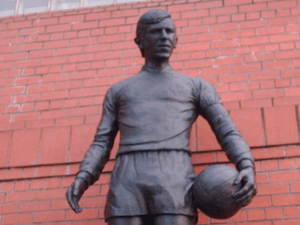
Sometimes disasters happen because of the facilities that are used to host football grounds. Other times the sheer volume of people in the ground means that one small thing can change the course of the situation.
Large numbers of people all trying to leave an area by the same means will always cause problems if it is not properly policed or stewarded and that has been the case far more times than it should have.
In 1971 Ibrox Stadium suffered another tragedy when supporters attempted to leave the ground before the end of the game.
It’s not clear exactly what happened but it is believed that one person fell on some stairs and a chain reaction resulted in 66 people losing their lives. Something similar happened at Luzhniki Stadium in 1982, resulting in 61 serious injuries and 66 deaths.
Police Failings
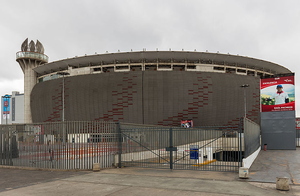
Generally speaking we are programmed to believe that the police and stewards know what they are doing and are there to protect us. That is especially true at major events such as sport matches; yet sadly, for varying reasons, that isn’t always the case.
More often than not the authorities tasked with looking after people do things for what they believe are the right reasons, yet they don’t always work out that way.
The worst disaster in the history of football occurred in Peru in 1964 at the Estadio Nacional.
The match was an important one for Olympic qualification and so the atmosphere was tense. When the referee made a poor decision someone ran onto the pitch to confront him. He was badly beaten by the police, causing some more members of the crowd to invade the playing surface. The police attempted to quell the crowd by firing tear gas into the stands, causing people to run for the exits and get crushed to death in the process. Riots ensued and ultimately more than 300 people lost their lives.
Sequential Errors – Snowball Effect
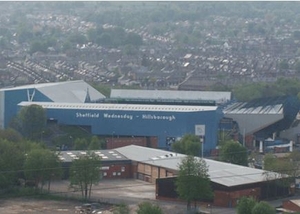
Sometimes there isn’t just one reason why a disaster occurs, even if there are standout issues that can be pointed to.
A snowball effect of problems all work together to create a dangerous and deadly situation from which there is no escape. In retrospect it’s easy to see what needed to be done differently but at the time, for whatever reason, these things aren’t done.
One such example of this occurred at Hillsborough in 1989.
The Football Association decided to host an FA Cup semi-final at the stadium despite being given warnings that the ground wasn’t fit for purpose. The stadium itself had no valid safety certificate. The match commander from the police was inexperienced and didn’t know how to cope when things started to go wrong. The layout of the ground meant that when the police opened an exit gate to allow supporters to make it into the stadium but failed to cut off access to pens that were already over-crowded, those at the front had no escape route and were sadly crushed to death. 96 people lost their lives that day in the worst stadium disaster on British soil.
What We’ve Learnt
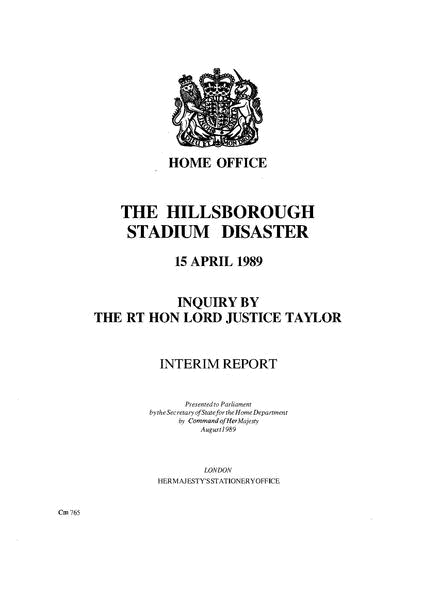
Scunthorpe United’s move to Glanford Park in 1988 saw the first time that a football club had moved to a purpose-built stadium for the first time since 1956. Because of finances, infrastructure and tradition most clubs had instead chosen to simply re-develop the grounds that they had been in for decades; sometimes since even before the First World War.
Only a very few clubs had ever completely re-built their stadiums before the 1990s, with Manchester United being a rare example of a club that chose to do so because Old Trafford was almost entirely destroyed by bomb damage in the Second World War.
Some small changes had occurred over the years. In the wake of the Ibrox Stadium Disaster of 1902, for example, it was decided that stands needed to be supported by reinforced concrete or earthworks so as to stop them from being vulnerable to collapse as had happened in Scotland.
The biggest change in football came about in the wake of Hillsborough, however, when the Taylor Report into the disaster decreed that all top-flight stadia should be all-seater and that standing should no longer be permitted. The government offered financial assistance on that front and by the mid-1990s virtually all Premier League clubs had gutted their old stadiums and fitted sitting, modernising them almost entirely. All top-tier clubs now play in grounds that have either been built from new or almost completely reconstructed.
The Future
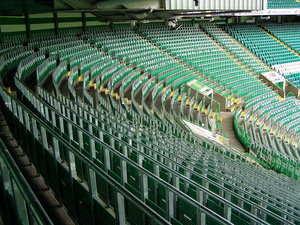
The biggest change that is likely to affect football in the UK in the future is the introduction of safe-standing. Football clubs were generally pleased by the Taylor Report’s recommendation that their stadiums should be turned into all-seater venues. Once they got over the shock at the cost of renovating their grounds it was realised that they could charge supporters more money for a seat than they could to cram them into paddocks or standing areas.
Sadly that meant that fans began to be priced out of the game and the atmosphere at stadiums suffered. In Germany and other European countries it is standard for clubs to have safe-standing in place. This allows each seat to fold up completely and have supporters stand next to one another instead. The ‘Yellow Wall’ at Borussia Dortmund’s Westfalenstadion is a perfect example of this, with 81,360 people able to attend the stadium for Bundesliga matches and the capacity being reduced to 65,829 for UEFA controlled Champions League matches that require every supporter to have a seat.
At Celtic Park a small section of safe-seating was introduced for the start of the 2016-2017 season, allowing the Glasgow club to assess whether it is something that it can roll out across the rest of the stadium and then the Scottish league. During the same season Premier League clubs began to tentatively explore the possibility of doing the same thing in England, though there have been no firm decisions made on this at the time of writing.
